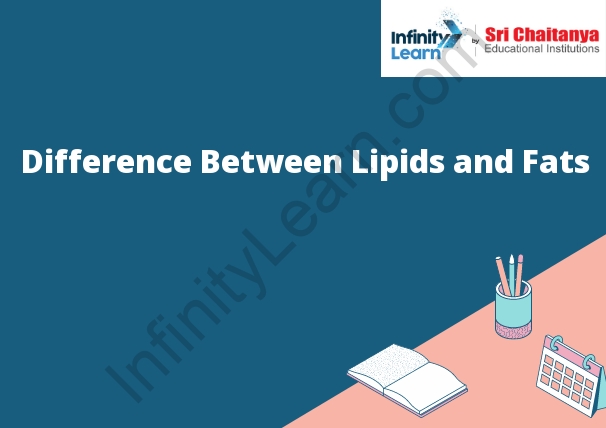Table of Contents
Lipids and Fats
Lipids are a type of organic molecule that includes fats, waxes, sterols, and some vitamins. Lipids are necessary for the body to function and are a source of energy. The body can store excess lipids in adipose tissue, which is the body’s way of reserving energy.

Difference Between Lipids and Fats in Tabulated Form
Lipids: Lipids are a diverse group of molecules that share a common property: they are all insoluble in water. This property arises from the fact that lipids are made of fatty acids, which are long, hydrocarbon chains that are not soluble in water.
Fats: Fats are a type of lipid that is particularly rich in the fatty acids called triglycerides. Triglycerides are molecules that consist of three fatty acids attached to a glycerol molecule. Fats are typically solid at room temperature, while lipids are typically either liquid or solid.
Lipids
are a type of biomolecule that are essential for the proper functioning of all cells in the body. Lipids are insoluble in water but soluble in organic solvents. They are composed of carbon, hydrogen, and oxygen atoms, and may also contain nitrogen, phosphorus, and sulfur atoms.
Lipids are diverse in structure and function. The most common type of lipid is a triglyceride, which is composed of three fatty acids attached to a glycerol backbone. Triglycerides are the primary form of stored energy in the body, and they are also essential for the proper function of cells. Other types of lipids include phospholipids, steroids, and waxes.
Types of Lipids
Lipids are a diverse group of molecules that play many important roles in the body. They are the main components of cell membranes, and they are also important for energy storage, hormone production, and cell signaling.
There are three main types of lipids: fats, phospholipids, and steroids.
Fats are made of fatty acids and glycerol. They are the most common type of lipid, and they are mainly responsible for energy storage.
Phospholipids are made of fatty acids and phosphates. They are the main components of cell membranes, and they play a role in cell signaling.
Steroids are made of cholesterol and steroid hormones. They are important for hormone production and cell signaling.
Fats
are organic molecules that are composed of carbon, hydrogen and oxygen atoms. Fats are a type of lipid, which is a molecule that is composed of a glycerol molecule and three fatty acids. Fats are necessary for the body to function, and they are used to store energy, insulate the body and protect organs.
There are three types of fatty acids: saturated, monounsaturated and polyunsaturated. Saturated fatty acids are the most common type of fatty acid and they are found in animal products. Monounsaturated fatty acids are found in plant products, and they are considered to be healthier than saturated fatty acids. Polyunsaturated fatty acids are found in plant and animal products, and they are considered to be the healthiest type of fatty acid.
Fats are classified as either healthy or unhealthy based on the type of fatty acids they contain. Unhealthy fats are those that contain saturated fatty acids, which are linked to heart disease and other health problems. Healthy fats are those that contain monounsaturated and polyunsaturated fatty acids, which are linked to health benefits such as reduced risk of heart disease and other health problems.
Types of Fats
There are three types of fats: saturated, monounsaturated, and polyunsaturated.
Saturated fats are found mainly in animal products, such as meat, dairy, and eggs. They are also present in tropical oils, such as palm kernel oil and coconut oil. These fats are typically solid at room temperature.
Monounsaturated fats are found mainly in plant products, such as olive oil, canola oil, and avocados. They are also present in nuts and seeds. These fats are typically liquid at room temperature.
Polyunsaturated fats are found mainly in plant products, such as soybean oil, walnut oil, and flaxseed oil. They are also present in fish and seafood. These fats are typically liquid at room temperature.








